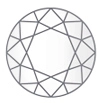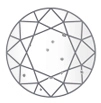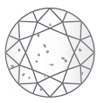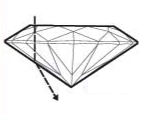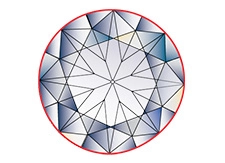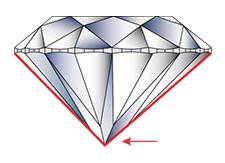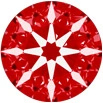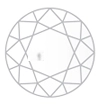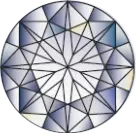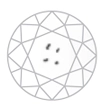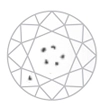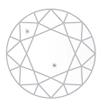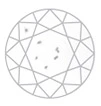Carat
Diamond Carat Guide
0.25
Ct.
4.1
mm
0.25
Ct.
4.1
mm
0.25
Ct.
4.1
mm
0.25
Ct.
4.1
mm
0.25
Ct.
4.1
mm
0.25
Ct.
4.1
mm
0.25
Ct.
4.1
mm
0.25
Ct.
4.1
mm
0.25
Ct.
4.1
mm
Carat Size
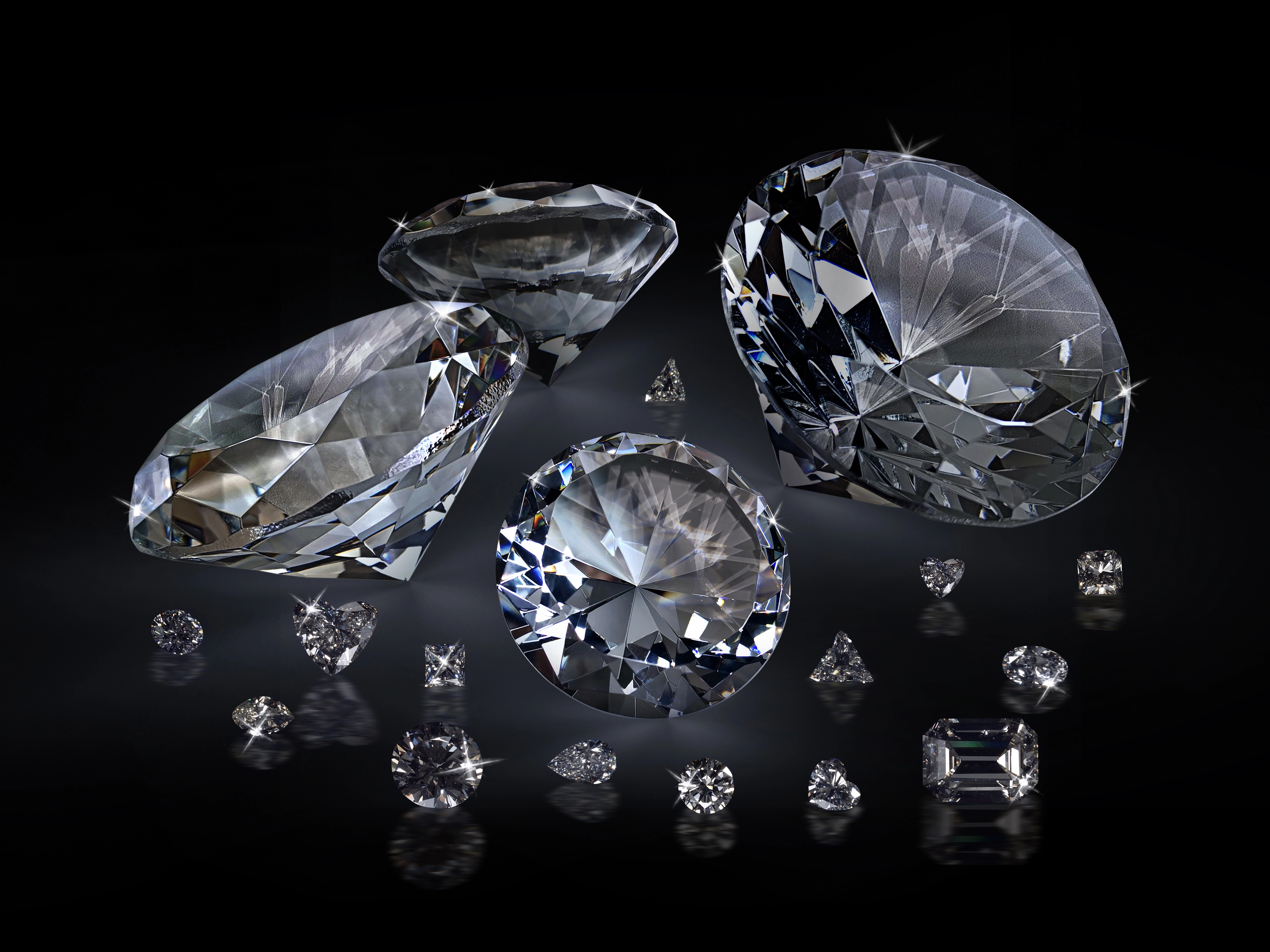
| 0.18 | 0.180 to 0.229 |
| 0.23 | 0.230 to 0.299 |
| 0.3 | 0.300 to 0.399 |
| 0.4 | 0.400 to 0.499 |
| 0.5 | 0.500 to 0.699 |
| 0.7 | 0.700 to 0.899 |
| 0.9 | 0.900 to 0.999 |
| 1 | 1.000 to 1.499 |
| 1.5 | 1.500 to 1.999 |
| 2 | 2.000 to 2.999 |
| 3 | 3.000 to 3.999 |
| 4 | 4.000 to 4.009 |
| 5 | 5.000 to 5.999 |
| 6 | 6.000 to 6.999 |
| 7 | 7.000 to 7.999 |
| 8 | 8.000 to 8.999 |
| 9 | 9.000 to 9.999 |
| 10 | 10.000 to 10.999 |
Color
Diamond Color Variations
White Color
Yellowish
Brown
Pink
Grey
Green
Diamond Color Guide
Premium White
White
Tinted White
Slightly Tinted
Faint Yellow
Clarity
The Clarity Grading Of A Diamond Is Based On The Number Of Inclusions And Range From Internally Flawless To I3 (Many Internal Inclusions) And We Grade The Diamonds Based On The Following Internationally Accepted Criteria.
| FL | Flawless |
| IF | Internally Flawless |
| VVS1 | Very very slightly included 1 |
| VVS2 | Very very slightly included 2 |
| VS1+ | Slightly better than VS1 |
| VS1 | Very slightly included 1 |
| VS2+ | Slightly better than VS2 |
| VS2 | Very slightly included 2 |
| SI1+ | Slightly better than SI1 |
| SI1 | Slightly included 1 |
| SI2+ | Slightly better than SI2 |
| SI2 | Slightly included 2 |
| I1+ | Slightly better than I1 |
| I1 | Included 1 |
| I1- | Slightly lower than I1 |
| 12+ | Slightly better than I2 |
| I2 | Included I2 |
| I2- | Slightly lower than I2 |
| I3+ | Slightly better than I3 |
| I3 | Included I3 |
| I4+ | Slightly better than I4 |
| I4 | Included I4 |
IF
Internally Flawless
VVS1 | VVS2
Very Very Slightly Included
VS1 | VS2
Very Slightly Included
SI1 | SI2
Slightly Included
I1 | I2 | I3 | I4
Imperfect
CUT
Diamond Measurement

Diamond Cut
Excellent
Very Good
Good
Fair
Symmetry
Symmetry Refers To The Exactness Of The Shape And Arrangement Of Facets And Can Be Affected By The Following Factors:
OFF-ROUND
Deviation from the circular shape of a round diamond.
OFF-CENTER: CULET
Deviation from the culet from the central position on the pavilion.
GIRDLE THICKNESS VARIATION
Variation of the girdle thickness at the bezel positions.
OFF-CENTER TABLE
Deviation of the table from the central position of the crown.
TABLE/ CULET ALIGNMENT
Displacement of the table facet and culet in opposite directions.
TABLE SIZE VARIATION
Differing table size measurements indicating non-octagonal table.
Polish
Polish Is A Measure Of The Smoothness Of The Facets On The Diamond And Can Be Affected By Any Of The Following:
Abrasion
Scratches
Burn Marks
Nicknick
Polishing Lines
Other Features Which Affect Polish Are
Pit, Transparent Polishing Lines, Dop Burn, Rough Girdle, Laser Groove
Other Features Which Affect Polish Are
EX
Excellent Polish
VG
Very Good Polish
GD
Good
Polish
FR
Fair Polish
| EX | Excellent Polish |
| VG | Very Good Polish |
| GD | Good Polish |
| FR | Fair Polish |
Hearts & Arrows
DIAGRAM 1
(Heart Image)
DIAGRAM 2
(Arrow Image)
The Term Hearts And Arrows Relates To A Stone Having Perfect Proportions And Symmetry. When Perfectly Polished, The Diamond Displays Heart Shaped Reflections When Looking From The Pavilion (Diagram 1) And Arrow Shaped Reflections When Looking From The Table (Diagram 2)
Based On The Factors Above, We Grade Heart & Arrow As Follow:
ID
Ideal Hearts & Arrows
EX
Excellent Hearts & Arrows
VG
Very Good Hearts & Arrows
| ID | Ideal Hearts & Arrows |
| EX | Excellent Hearts & Arrows |
| VG | Very Good Hearts & Arrows |
Flourescence
To Measure Fluorescence Diamonds Are Exposed To Ultraviolet Light. This Light Will Indicate The Extent Of Fluorescence In Diamond. The Pictures Below Show The Different Grades Of Fluorescence. We Grade Fluorescence By Comparing With Fluorescence Masters For Accurate Results
Top View

Side View

Star Rays Grades Fluorescence With UV Light And Compare With Fluorescence Master Stones For Accurate Results.
| N | Ideal Hearts & Arrows |
| F / VSL | Excellent Hearts & Arrows |
| M / SL | Medium / Slight |
| STG | Strong |
| V.STG | Very Strong |
Luster
Luster Is A Way Of Measuring How The Light Interacts With
The Surface Of The Stone.

We Grade Under As Follows:
EX
Excellent Luster
VG
Very
Good Luster
ML - 01
(ML-01)
Minor Milky Luster
ML -
1
(ML-1) Slight Milky Luster
ML - 2
(ML-2)
Medium Milky Luster
ML - 3
(ML-3)
Heavy Milky Luster
| EX | Excellent Luster |
| VG | Very Good Luster |
| ML - 01 | (ML-01) Minor Milky Luster |
| ML - 1 | (ML-1) Slight Milky Luster |
| ML - 2 | (ML-2) Medium Milky Luster |
| ML - 3 | (ML-3) Heavy Milky Luster |
Opens
Open Is A Very Small Unpolished Section Of A Diamond Which Affects Its Polished Finish. Opens Can Be Nick, Cavity Or Percussion Mark, Knot, Etch Channel, Bruise & Pit. When Grading Diamonds We Define An Open According To Where It Is Located On The Diamond. It Can Be On The Table, Crown, Girdle Or Pavilion.
The Different Facets Of A Round Brilliant Cut Diamond
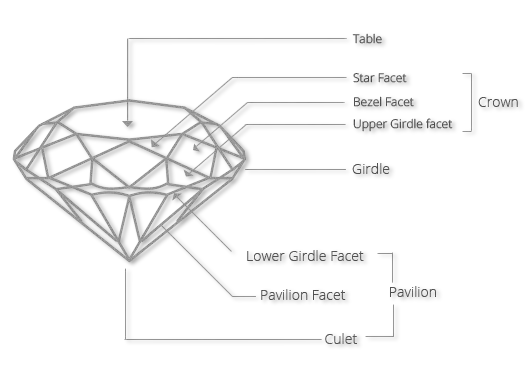
We Grade Opens As Follows:
| N | None |
| V.S | V.Small |
| S | Small |
| MED | Medium |
| L | Large |
INCLUSION PATTERN
The Inclusion Pattern Defines The Extent And Proportion Of Inclusions In The Diamonds.
The Grading Criteria Range From Minor Inclusions (Scattered) To Major Inclusions (High Concentration)
| NA | Not Applicable |
| NC | Not Concentrated |
| S1 | Scattered 1 |
| S2 | Scattered 2 |
| C1 | Concentrated 1 |
| C2 | Concentrated 2 |
| C3 | Concentrated 3 |
NA
NC
S1
S2
C1
C2
C3
CULET
A Polished Diamond Has 57 Facets And The Culet (The Tiny Facet Or Point At The Base Of The Pavilion) The Culet May Vary In Size That In Turn Can Impact The Brilliance Of The Polished Stone, So We Grade The Culet From Pointed (Excellent) To Chipped.
| N | None |
| V.S | Very Small |
| S | Small |
| MED | Medium |
None
V.Small
Small
Medium
BLACK INCLUSION
Natts Are Black Colored Crystals, Graphite Or Hematite Within A Diamond. Higher The Number Of Natts Inclusions Within A Diamond Greater Is Its Impact On The Clarity And Luster. We Grade Natts According To Its Concentration, Position And Size.
| Black in Table (BIT) | Black in Crown (BIC) | |
|---|---|---|
| NO Black | N0 | N0 |
| Minor Black | N01 | N01 |
| Small Black | N1 | N1 |
| Medium Black | N2 | N2 |
| Major Black | N3 | N3 |
NO
NO1
N1
N2
N3
TABLE & CROWN INCLUSION
A diamond is graded by looking through the top (the Table), where it is possible to obtain the complete picture of its clarity. We grade diamonds on this basis to identify Table and Crown inclusion.
T01-C01
T2-C1
| Table Inclusion | |
|---|---|
| T0 | Clean Table |
| T01 | Minor Inclusions |
| T1 | V. Slight Inclusions 1 |
| T2 | Slight Inclusions included 2 |
| T3 | Medium Inclusions |
| T4 | Heavy Inclusions |
| Crown Inclusion | |
|---|---|
| C0 | Clean Table |
| C01 | Minor Inclusions |
| C1 | V. Slight Inclusions |
| C2 | Slight Inclusions |
| C3 | Medium Inclusions |
| C4 | Heavy Inclusions |












